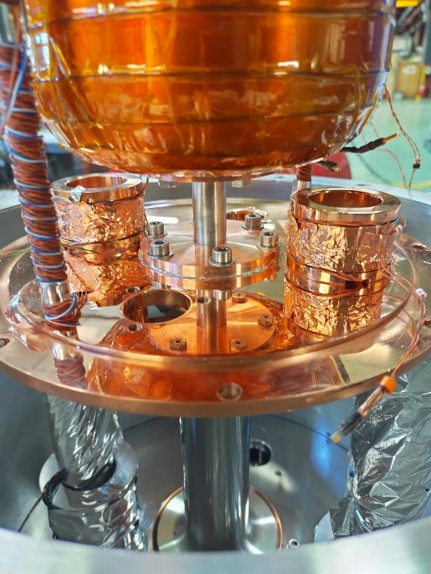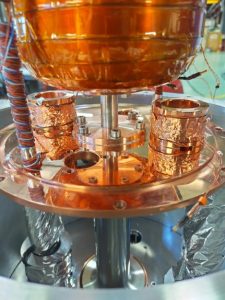The task of LCSE is to master cryogenics technology applied to superconducting magnets, accelerating cavities, physics detectors (cryogenic target systems, calorimeters), and the production and distribution of liquid helium.
For its own developments, and to meet project needs for development and testing, the laboratory designs, builds, and operates several test and characterization stations to determine the mechanical, thermal (see figure), and electrical properties of complete cryogenic subassemblies (such as magnets within cryostats, cryomodules, …), or their basic components (coil cold mass, RF cavities, instrumentation). These stations of various types and sizes use low-temperature refrigeration systems, such as refrigerators or cryogenerators, using the following fluids: helium I and II, nitrogen, argon, neon, or hydrogen.
More specific R&D activities are being carried out on the study and improvement of low-temperature heat transfer systems (helium II in porous media, PHP (pulsating heat pipes) with different gases at cryogenic temperatures), on two-phase flows (thermosiphon with helium I or nitrogen), on the thermohydraulics during magnet “quench”, and on the development of cryogenic targets in liquid or solid hydrogen.
At the end of 2020, laboratory staff consisted of 16 engineers, two doctoral students, and six technicians.



